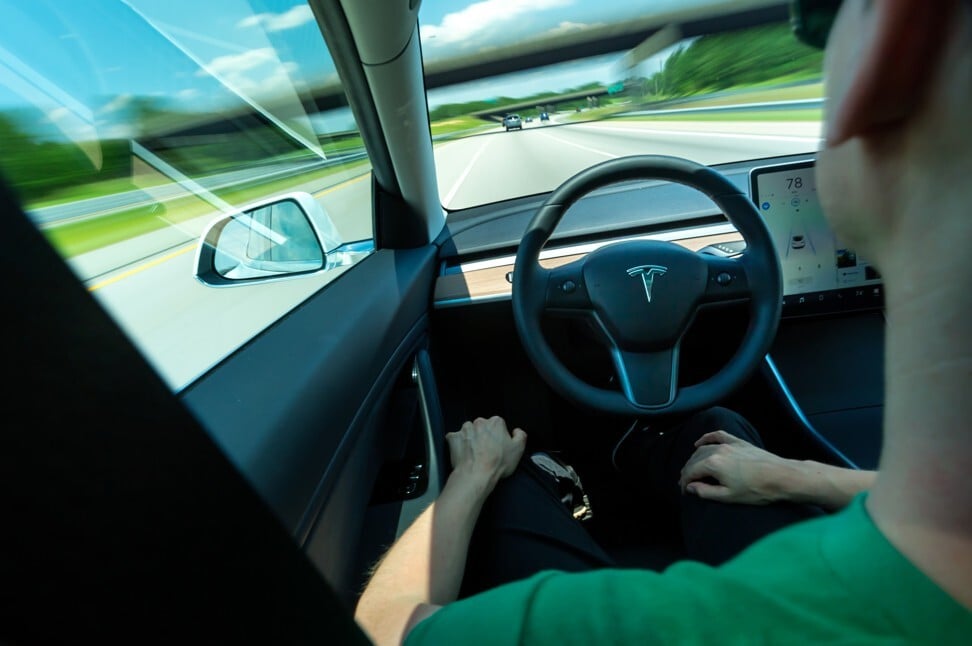
Autonomous driving tech causes alarm in China following fatal NIO car accident, but experts say training mitigates risks
- Debate has erupted over driver-assistance systems, which offers some autonomous functionality, following a fatal accident involving a NIO ES8 SUV
- Many buyers say they were not educated about the tech’s limitations, which analysts say is necessary to help prevent future accidents
Drivers in mainland China are looking at driver-assistance systems with jaundiced eyes following a fatal car accident that has sparked debate about the possible misuse of the technology meant to be a pit stop on the way to fully autonomous driving.
China’s EV deliveries mixed in August as Covid-19 cut supply chains
“Fears have been played up,” said David Zhang, a researcher of the automotive industry. “The accidents were tragic and the carmakers would have to assess the risks in their technologies, but it is too early to sign a death warrant for those driver-assistance systems.”
The accident that has captured the nation’s attention happened on August 12, when a 31-year-old entrepreneur was killed while driving NIO’s ES8 SUV. The accident occurred while the NOP system was turned on, NIO said in a statement.
Police in Shandong province are investigating the case with NIO’s assistance. It will be months before the investigation is concluded, analysts said.
Some complained that they did not receive any instructions from NIO sales staff to help them understand how to use NOP.

The New York-listed carmaker wound up delivering 5,880 cars last month, a 26 per cent drop from July. Meanwhile, domestic rival Li Auto reported a sales jump of 9.8 per cent month on month, delivering 9,433 cars in August.
“Those driver-assistance technologies installed in cars built by Tesla, NIO and other companies are not full self-driving systems,” said Phate Zhang, founder of the Shanghai-based EV news portal CNEVPost. “To be precise, drivers are supposed to be responsible for monitoring the road and car’s conditions.”
He added that properly educating drivers about such systems’ functions would help avoid risks and tragedies.

03:06
China’s self-driving RoboTaxi hits the road
Typically, a driver-assistance system uses algorithms to analyse traffic data collected in real time by on-board sensors. “Environment detection” sensors can help a vehicle decide whether to pass a slow-moving car, but it still requires human intervention.
This type of automation is classified as level 2 (L2) or L2+, according to a classification system published by the standardisation body SAE International. Full automation, without the need for any human intervention, is L5.
“I would believe that in some cases, driver assistant technologies malfunctioned and caused the crashes, but some bold drivers were to blame for the accidents because they did not do what they had to do to avoid the crashes,” said Gao Shen, an independent analyst in Shanghai. “Car brands need to reiterate that the systems are not full self-driving technologies and require buyers to be fully alert when driving.”
Wang De‘an, an analyst with Ping An Securities, said that it would take a long period of time before machines can entirely take over for human drivers.
Is Baidu better than Waymo?
“We see that users’ expectations for these technologies now are usually higher than the level of automation the intelligent cars can achieve, and it puts the users at great risk,” he said.
Some smart car owners said drivers will take it for granted that these cars are fully autonomous if salespeople fail to remind them of the risks.
“Some salespeople did not bother to clarify that driver assistance does not mean that you can pass your responsibilities to the system and do other things when driving,” said Jie Chen, a driver who bought a NIO ES6 in Hangzhou last year.
Over the past two years, driver-assistance systems have become a major draw in China for a growing number of EV buyers.


